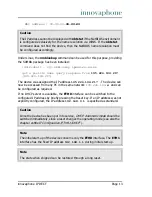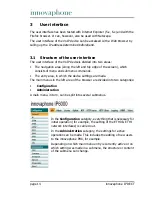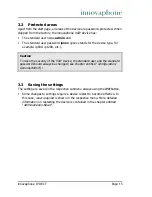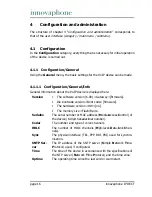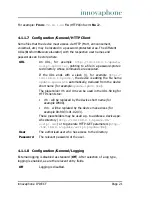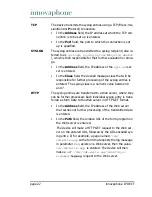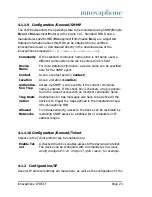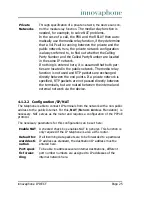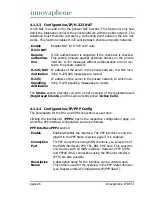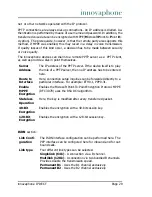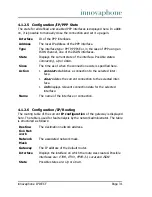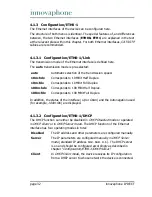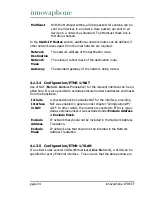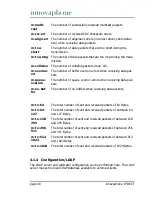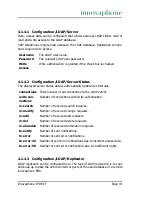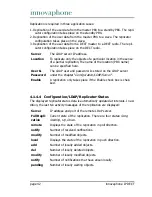
innovaphone IP DECT
Page 27
Bandwidth
By specifying a particular bandwidth, the transfer rate for a
connect can be restricted and the available network band-
width is optimally allocated. This is necessary, since for an
upstream, the available bandwidth may be lower than requi-
red. Packets that exceed the maximum available bandwidth
would be discarded. If a bandwidth is specified, packets that
exceed the maximum available bandwidth are not sent at all.
Maximum
transfer unit
(Bytes)
Restricts the packet size for a data exchange. This is neces-
sary for some devices, since they can only transfer a restric-
ted number of bytes. Here are a few typical MTU sizes in
octets:
• X.25 - 576
• PPoE (for example, DSL) - 1492
• ISDN, Ethernet - 1500
• ATM - 4500
IP Address
for Remote
Party
Assigns a local IP address to the remote party in order to
integrate it in the local network.
Auto dial
after boot
Results in the relevant PPP connection of the device being set
up and kept open immediately after start-up.
Allow
inbound con-
nections
If the server is configured as a PPP server, a checked check
box allows PPP dial-up connections to the device (inbound).
No DNS on
this interface
When a PPP connection to the remote party is set up, an
attempt is always made as standard to resolve the name of
the remote party to an IP address via DNS. Here, there is
always the risk, however, that there may be several PPP con-
nections that use the same IP address (for example,
192.168.1.2
). As a result, a name resolution would take
place once only, and the data packets sent to a different
name with the same IP address are lost.
Exclude
interface
from NAT
With this setting, a particular interface can be excluded from
NAT (
N
etwork
A
ddress
T
ranslation), should NAT be enabled
(see chapter entitled “
Configuration/IP/NAT
”).

